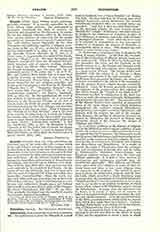

Synaxis (Greek: sunaksis from sunago) means gathering, assembly, reunion. It is exactly equivalent to the Latin collector (from colligere), and corresponds to synagogue (Greek: sunagoge), the place of reunion. In Christian and liturgical use the Synaxis is the assembly for any religious function, either in the abstract sense (nomen actionis) or concretely for the people assembled (cf. German Sammlung and Versammlung). The verb Greek: sunago occurs frequently in the New Testament, for gathering together a religious meeting (Acts, xi, 26; xiv, 27 etc.), as also for the Jewish services and councils (e.g. John, xi, 47). So also in the Apostolic Fathers (Didache, ix, 4; xiv, 1; I Clem., xxxiv, 7; in general for the union of the church, Ignatius, “Magn.”, x, 3). We must distinguish the liturgical (eucharistic) from the aliturgical Synaxis, which consisted only of prayers, readings, psalms, out of which our Divine Office evolved. Dionysius the Pseudo-Areopagite uses the word only for the eucharistic service (“De eccles. bier.”, iii, in P.G., III), and Cardinal Bona thinks that so it may have a mystic meaning, as referring to our union with God or Communion (Rerum liturg., I, iii, 3). But it occurs frequently for any religious assembly, and in this sense was adopted in the West by St. Benedict (“Regula Ben.”, 17: “Vespertina Synaxis “Vespers) and by John Cassian (“Collat.”, IX, 34: “ad concludendam synaxim”; ed. Hurter, Innsbruck, 1887, p. 315) etc. In this signification the word is now archaic in Greek and Latin. It is preserved, however, in the Byzantine Calendar as the title of certain feasts on which the people assemble in some particular church for the Holy Liturgy, and therefore corresponds to the Roman statio. Thus January 4 is the “Synaxis of the holy Seventy”, that is the feast of the seventy disciples (Luke, x, 1, where the Vulgate has seventy-two, on which day the assembly was once made in some church (at Constantinople?) dedicated to them (Nilles, “Kalendarium manuale,” I, 2nd ed., Innsbruck, 1896, p. 52); December 26 is the “Synaxis of the Theotokos and of Joseph the spouse and guardian of the Virgin”, a feast in memory of the flight into Egypt, on which again the station was at a special church (ibid., 366).
ADRIAN FORTESCIUE

